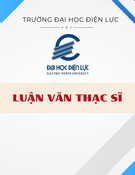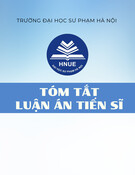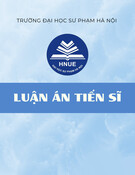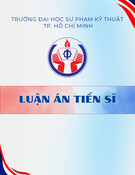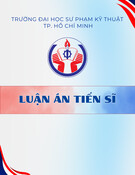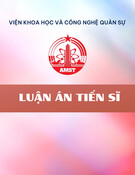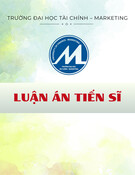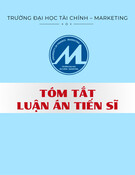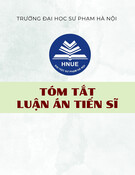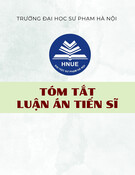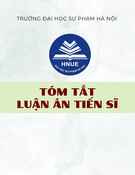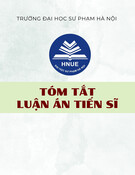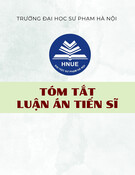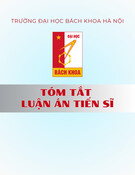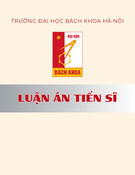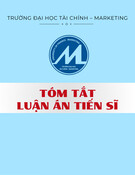
DEVELOPMENT OF A CRASH RISK PROBABILITY MODEL
AND ITS APPLICATION TO MITIGATE HAZARDOUS
CONDITIONS ON FREEWAYS
A thesis submitted in fulfilment of the requirements for the degree of
Master of Engineering
Md. Mahmud Hasan
B.Sc.
School of Civil, Environmental and Chemical Engineering
College of Science, Engineering and Health
RMIT University
February 2012

i
DECLARATION
I certify that except where due acknowledgement has been made, the work is that of the
author alone; the work has not been submitted previously, in whole or in part, to qualify
for any other academic award; the content of the thesis is the result of work which has
been carried out since the official commencement date of the approved research program;
any editorial work, paid or unpaid, carried out by a third party is acknowledged; and,
Ethics procedures and guidelines have been followed.
……………………………………
(Md. Mahmud Hasan)
23.02.2012

ii
ACKNOWLEDGEMENTS
The first and the foremost, the author would like to thank the Almighty for allowing him to
complete the research work successfully.
The author expresses his gratitude to a number of people who played an important role in
completing the research work. The author is greatly indebted to his supervisor Dr. Shamas
Bajwa for his invaluable and expert guidance throughout this research timeline. Special thanks
to Dr. Edward Chung for his helpful suggestions. Thanks to Mr. Jude Jusayan and Tim
Strickland of Vic Roads and the authority of Bureau of Meteorology (Australia) for providing
the data. The author is grateful to Dr. Indubhushan Patnaikuni and Dr. Muhammed Bhuiyan
for their kind help during the study period.
The author extends gratitude to all his friends in RMIT University for their help and co-
operation. Also, thanks to the office staffs of the School of Civil, Environmental and Chemical
Engineering (RMIT University) for providing information and suggestion during this study.
The author also appreciates the assistance and supports of Nazmun Nahar.
Finally, the author is grateful to his parents: Humayun Kabir and Nurun Nahar, without whom
this study would have been impossible. The author is also thankful to his siblings: Azmin,
Razon and Ivan to provide constant support during the hardest time.

iii
TABLE OF CONTENTS
DECLARATION
....................................................................................................
i
ACKNOWLEDGEMENTS
.................................................................................
ii
LIST OF FIGURES
................................................................................................
viii
LIST OF TABLES
...................................................................................................
xi
ABSTRACT
.............................................................................................................
1
Chapter 1: INTRODUCTION
..............................................................................
2
1.1 Background.............................................................................................................
2
1.2 Statement of the Problem......................................................................................
3
1.3 Objectives of the Study.........................................................................................
4
1.4 Research Questions...............................................................................................
4
1.5 Outline of the Thesis.............................................................................................
4
Chapter 2: LITERATURE REVIEW
..................................................................
6
2.1 Effect of Traffic Parameters on Road Accident......................................................
6
2.1.1 Traffic Flow and Road Accidents........................................................................
6
2.1.2 Vehicle Speed and Road Accidents.....................................................................
7
2.2 Effect of Rainfall on Traffic Parameters and Road Accidents................................
8
2.2.1 Rainfall and Traffic Flow.....................................................................................
8
2.2.2 Rainfall and Vehicle Speed..................................................................................
9

iv
2.2.3 Rainfall and Road Accidents................................................................................
10
2.3 Accident Prediction Models....................................................................................
11
2.4 Application of Mitigation Schemes........................................................................
12
2.5 Limitations and Research Gaps..............................................................................
13
2.6 Summary.................................................................................................................
14
Chapter 3: SITE SELECTION AND DATA ISSUES
...................................
15
3.1 Selected Site............................................................................................................
15
3.2 Data Requirements..................................................................................................
16
3.3 Data Collection........................................................................................................
16
3.3.1 Data Collection Site.............................................................................................
16
3.3.2 Duration of Data...................................................................................................
17
3.3.3 Details of Each Data Type...................................................................................
17
3.4 Data Fusion.............................................................................................................
19
3.5 Summary.................................................................................................................
20
Chapter 4: MODEL DEVELOPMENT AND VALIDATION
..................
21
4.1 Classification Tree Analysis...................................................................................
21
4.1.1 Building the Classification Tree...........................................................................
21
4.1.2 Splitting Criteria...................................................................................................
22
4.1.3 Missing Data Cases..............................................................................................
23
4.1.3.1 Choosing the Split.............................................................................................
23
4.1.3.2 Surrogate Variables...........................................................................................
24

